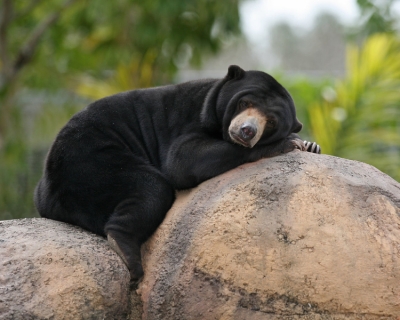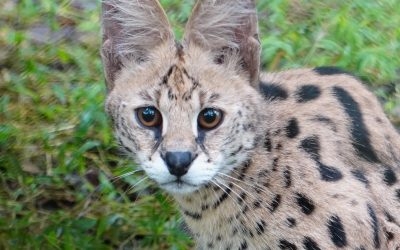What are the fun facts of sun bear?

Sun bear is the smallest of all bears, inhabiting the rainforests of Southeast Asia. Its body is covered with short, but coarse fur that can be brown, black or grey. There is a U-shaped patch of white on the chest, which looks like the rising sun.
Its unique feature is its very long tongue (20-25cm long). This helps them extract honey from beehives and also earning it the nickname honey bear.
It does not hibernate but build nests of twigs and leaves in trees to sleep in. It eats insects, leaves, lizards, and berries. But its favourite snack is honey.
Sun bears don’t appear to have a defined breeding season and generally give birth to one cub. Cubs are born in dens or in hollow trees and are blind and helpless at first. At around 2 months, they are capable of moving about and weaning takes place at around 4 months. Parental care is important in the early life of cubs and they remain with their mothers for 2 years or more after birth.
With estimated population declines of over 30% over the past 30 years, sun bears are classed as Vulnerable on the IUCN Red List of Threatened Species. Sun bears occupy just a fraction of their former range, having been extirpated from many areas it originally occupied.
Picture Credit : Google
